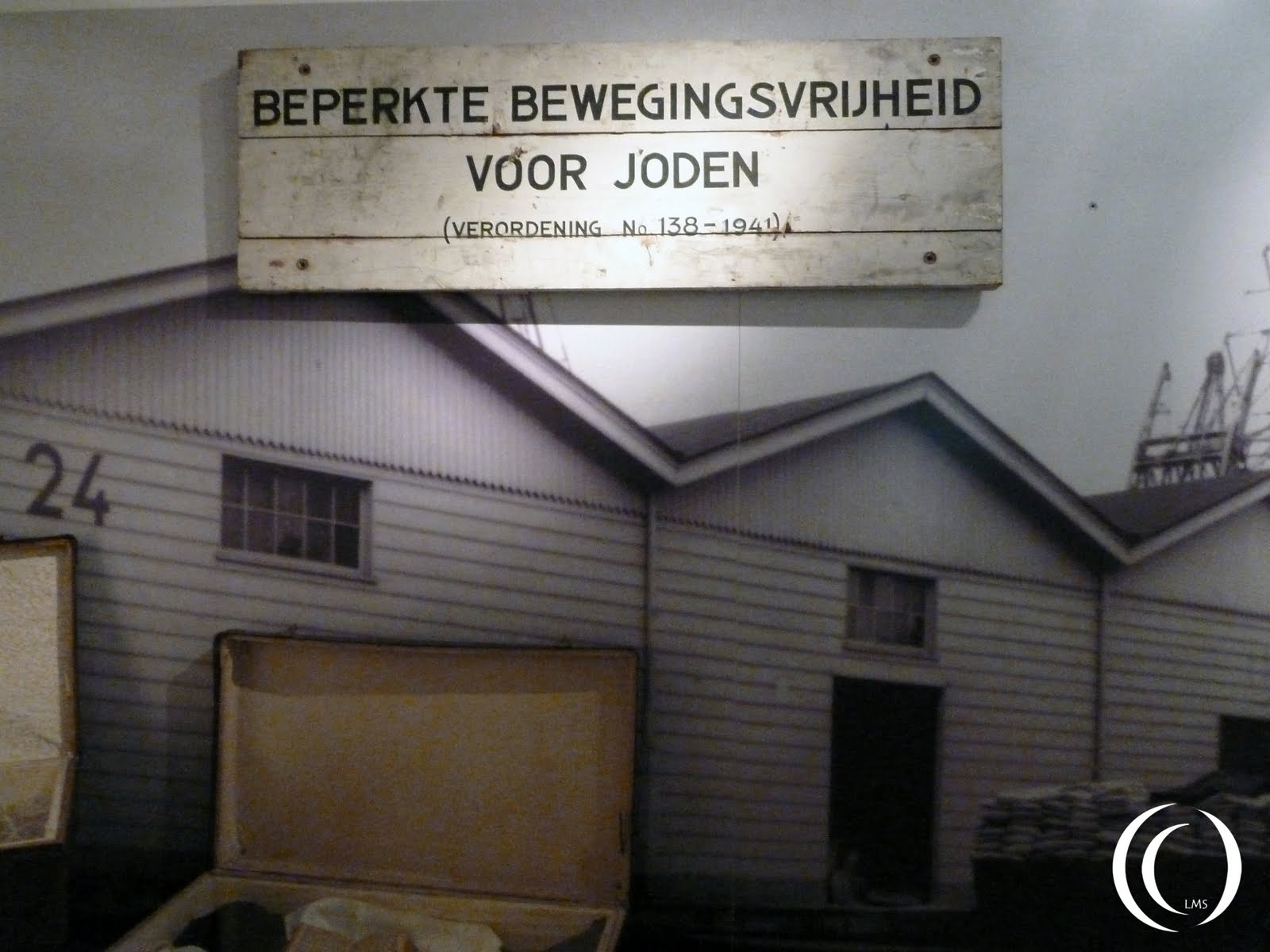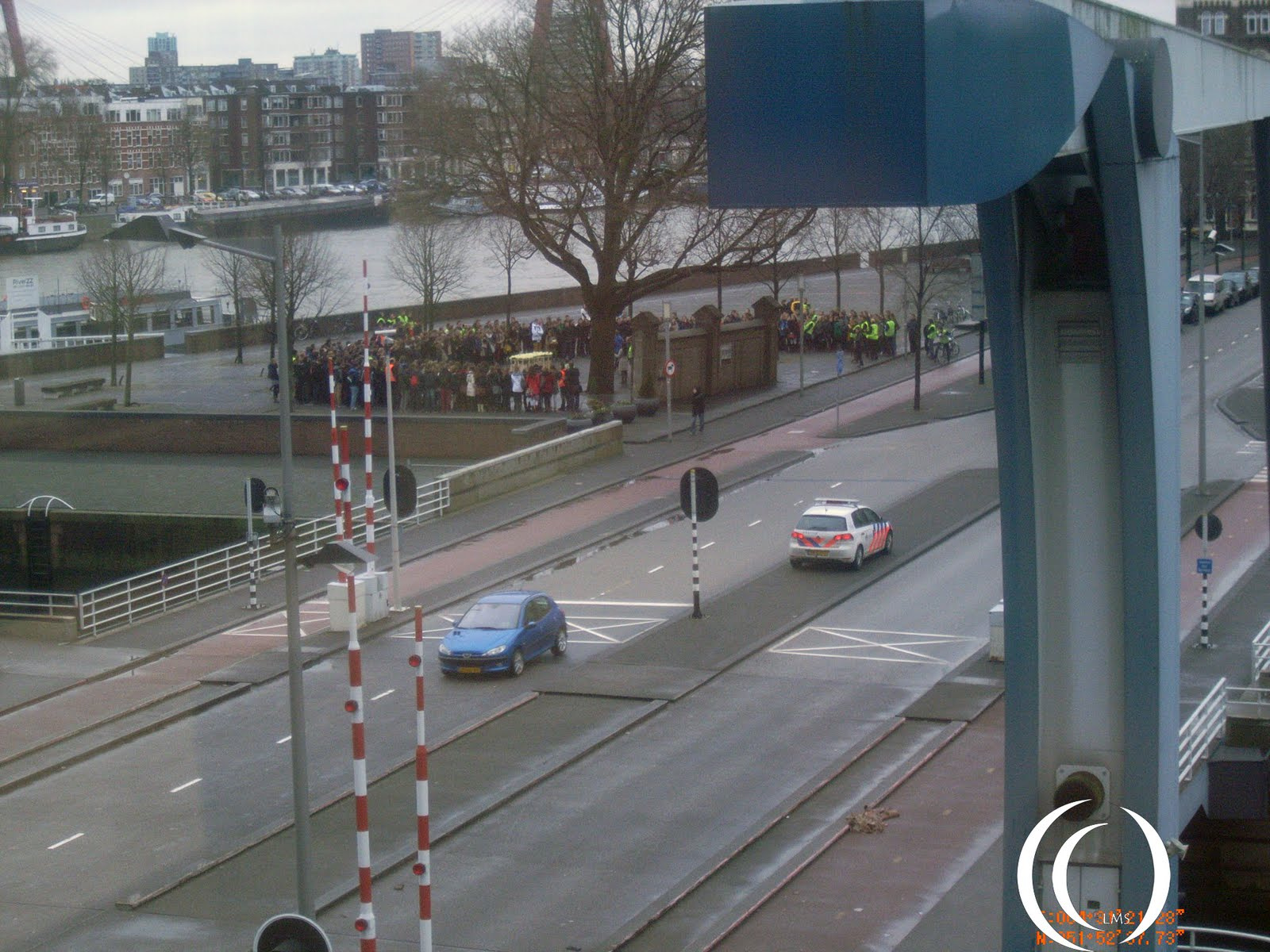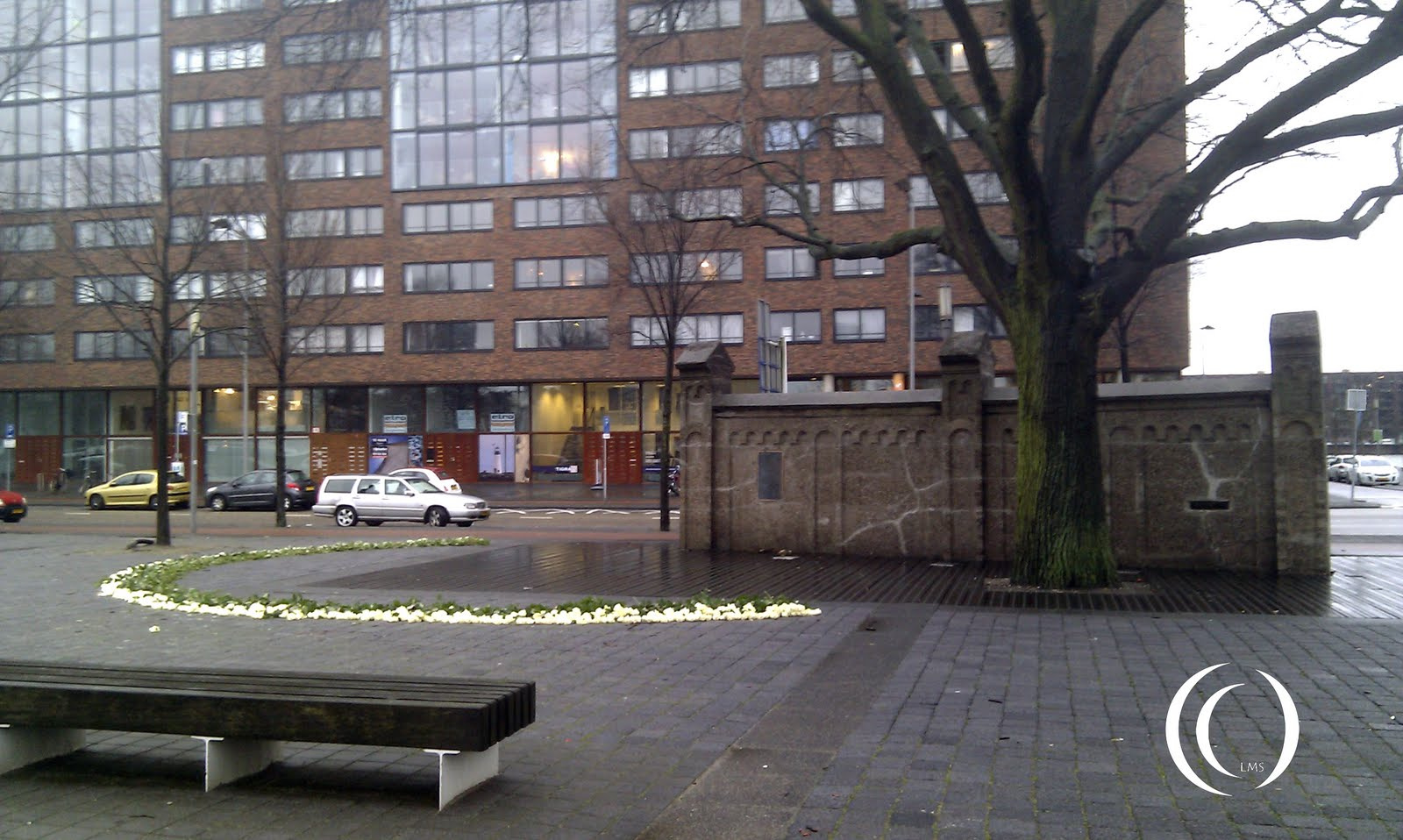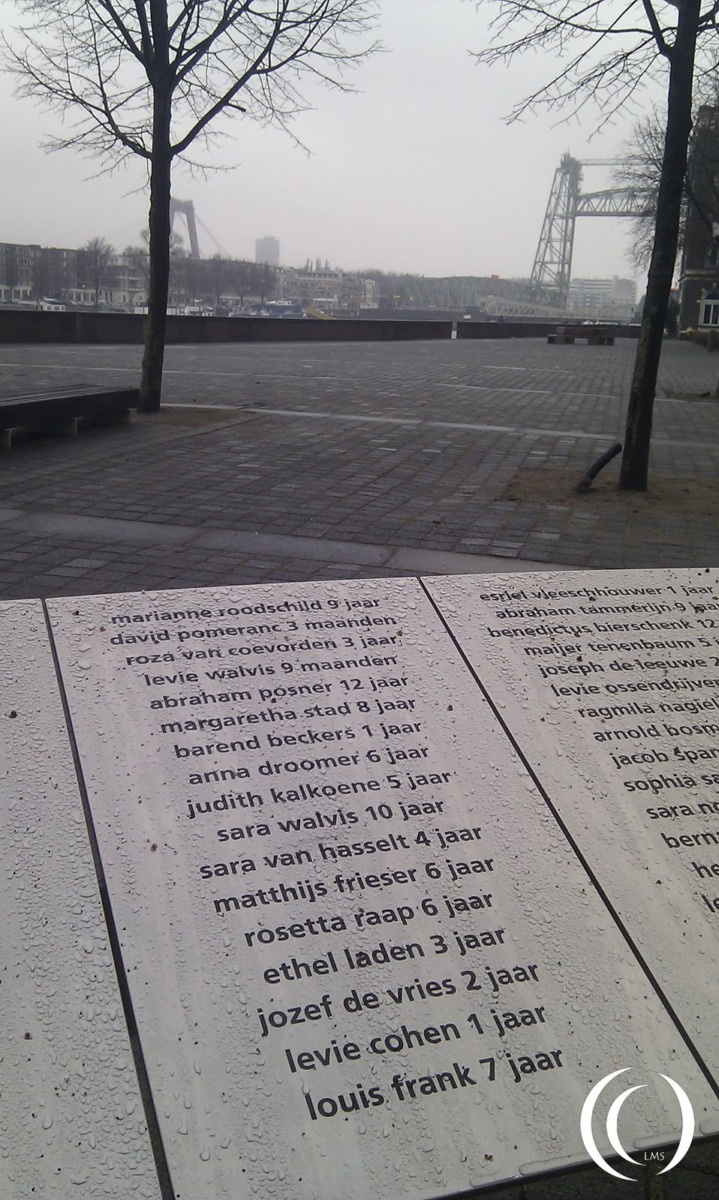
“Loods 24” is the former transit warehouse number 24 in the Rotterdam harbour. During the Second World War it was used to house Jews rounded up in the city of Rotterdam and from the surrounding countryside. Barracks to house the Jews were built within the transit warehouse compound. From this place the victims waited for deportation to Germany.
Deportations
Between 30 July 1942 and 22 April 1943, 6790 Jewish people were deported to extermination camps in Germany and Poland. The Germans in the Netherlands started with systematic extermination of Jews in 1942.
In the summer of that year a few thousand Jewish inhabitants received a letter with a call to report at the transit warehouse. Blocked from vision by a two meters high wall the location was cloaked in secrecy.
The people that reported for this false call were put on transport at night to Concentration camp Westerbork, a transit camp in the Netherlands.From camp Westerbork the Germans send the Jewish people to labour camps and extermination camps in Germany and Poland.



The call for labour was repeated twice, then the Germans changed tactics and started raids to get the Jews. They even used investigative units of Dutch policemen to accomplice the job
On 26 February 1943 the Germans emptied an orphanage filled with Jewish children,they raided a Jewish hospital and a Jewish mental house for older people and the mentally ill.


The deportations in 1942 and 1943 disrupted and destroyed the Jewish social life. In 1942 the Germans deported 4313 Jewish people from Rotterdam and the Islands south of Rotterdam. In 1943 they deported 2223 Dutch Jewish Citizens. In 1944 the Dutch Police succeeded in imprisoning another 254 citizens, mostly Jews in hiding. 81% of the Jewish inhabitants from Rotterdam were murdered during World War Two.
Before the outbreak of war Rotterdam housed over 11.000 Jew citizens. A new monument was given to the 686 children, ages from 1 year to 12 years who did not return after the war.


According to accurate estimations 6790 Jews from Rotterdam were put on transport to Westerbork. Only a few hundred survived, most victims fell in concentration camps such as Sobibor, Auschwitz, Bergen – Belsen and Theresienstadt. Most of these Jews were murdered upon arrival in the gas chambers at the camps, and their remains incinerated.


Forced Labour
From the moment the Germans invaded the Netherlands they tried to interest Dutch civilians to work for the German war industry. Due to the economic crisis of 1930, many Dutch were unemployed. The German armament industry needed plenty of workers. The Germans pressed the Dutch to work in Germany, if they refused the unemployed lost their unemployment benefits. To earn a few bucks some unemployed made the trip to the German employment agency. They left voluntarily to Germany, their number isn’t very high though.


As the war moved on, the German war industry needed employees desperately. The German themselves were send out to war in Russia, tens of thousands soldiers were needed on the Eastern front. Because the war industry had to keep on producing, the pressure on labourers from the occupied territories increased. Voluntary sign up to work in Germany was now a thing of the past. Forced labour was now at hand. Dutch companies received commands to send their labourers to Germany.
In Rotterdam, on 10 and 11 November 1944, the Germans raided the city and the neighbouring city of Schiedam for two days in a row. On the early morning of the 10 November the Germans marched through the city,they spread out in the streets near to the bombed city centre, blocking all exits. They picked up men between 17 and 40 years of age. Men had to fear for their lives if they didn’t listen to the commands of the Germans. With this well planned raid they picked up 52000 civilians in Rotterdam, 52000 were sent to Germany in Forced labour.